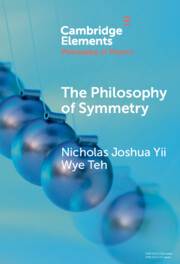Element contents
The Philosophy of Symmetry
Published online by Cambridge University Press: 21 May 2024
Summary
- Type
- Element
- Information
- Online ISBN: 9781009008600Publisher: Cambridge University PressPrint publication: 20 June 2024
References
- 6
- Cited by

